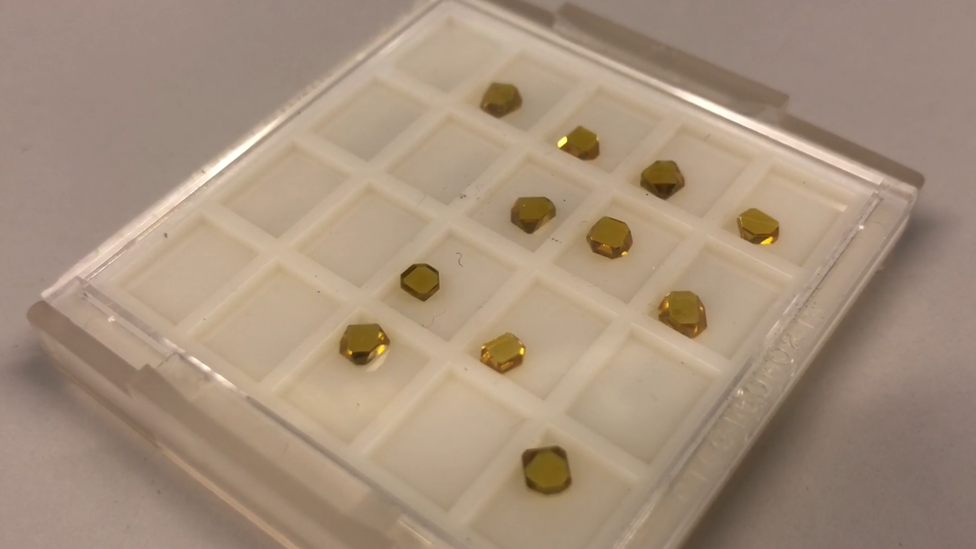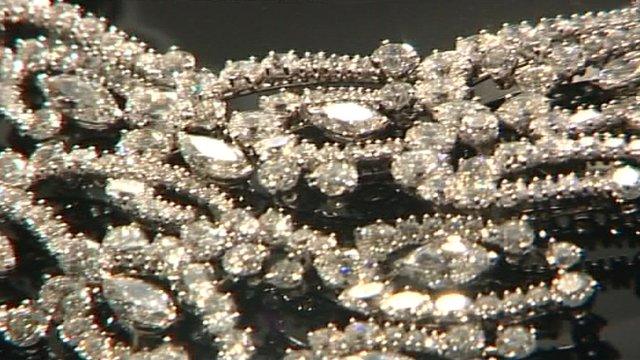Cardiff University physicist grows synthetic diamonds in a day
- Published

Dr Oliver Williams uses diamond crystals, such as these, to grow the synthetic stones on
Picture a diamond and you might imagine a gemstone in a ring or a necklace which was formed under high pressure deep under the Earth's surface over millions of years.
But not all are decorative and not all are created by nature. Some diamonds are used for industrial purposes and made in just 24 hours in a small laboratory at Cardiff University.
"If you're going to grow a diamond you really have two options: You can either try to copy nature or you can cheat nature," said Oliver Williams, a physicist at the university who creates synthetic stones.
"Most industrial diamonds are made by crushing carbon at high temperature, like Superman in a movie, but here at Cardiff we use a low pressure technique which can grow a much higher purity diamond."
The diamond emits a bright light as the gas turns to plasma under high heat in the chamber
The process works by placing a small diamond crystal in an airless container, which is then filled with a mixture of hydrogen and methane (carbon and hydrogen) gas.
The gases are heated at a pressure 1,000 times lower than the atmosphere, which causes them to undergo a chemical process known as ionisation, separating the carbon - which is what diamonds are made from - from the hydrogen.
This reaction happens at about 3,000C (5,432F), which causes the pure carbon to form on top of the original crystal, creating a diamond in the space of 24 to 48 hours.
What is left is an industrial scale diamond, much purer and harder than a natural diamond, but not something you would want in the middle of an engagement ring.
Industrial diamonds are used in the production of thousands of every day objects, from cars to mobile phones to simple electronics.
"The best way to think about [the everyday usage of] diamonds is getting to work, whether that's by car or public transport," Dr Williams said.
"Most deep sea drilling is diamond enabled and it wouldn't really happen if these drill bits didn't contain multiple diamonds. It's also used to wire aircraft and the bevel of the previous iPhone was machined by a diamond.
"The main point is it would be almost impossible to get to work without coming into contact with something that has been enabled by diamonds."
The industrial market, while not as valuable as the $140bn (£103bn) gemstone industry, is still worth about $20bn (£14.8bn) every year and produces at least 1,000 tonnes of stones in that time.
- Published4 January 2017

- Published3 November 2014
